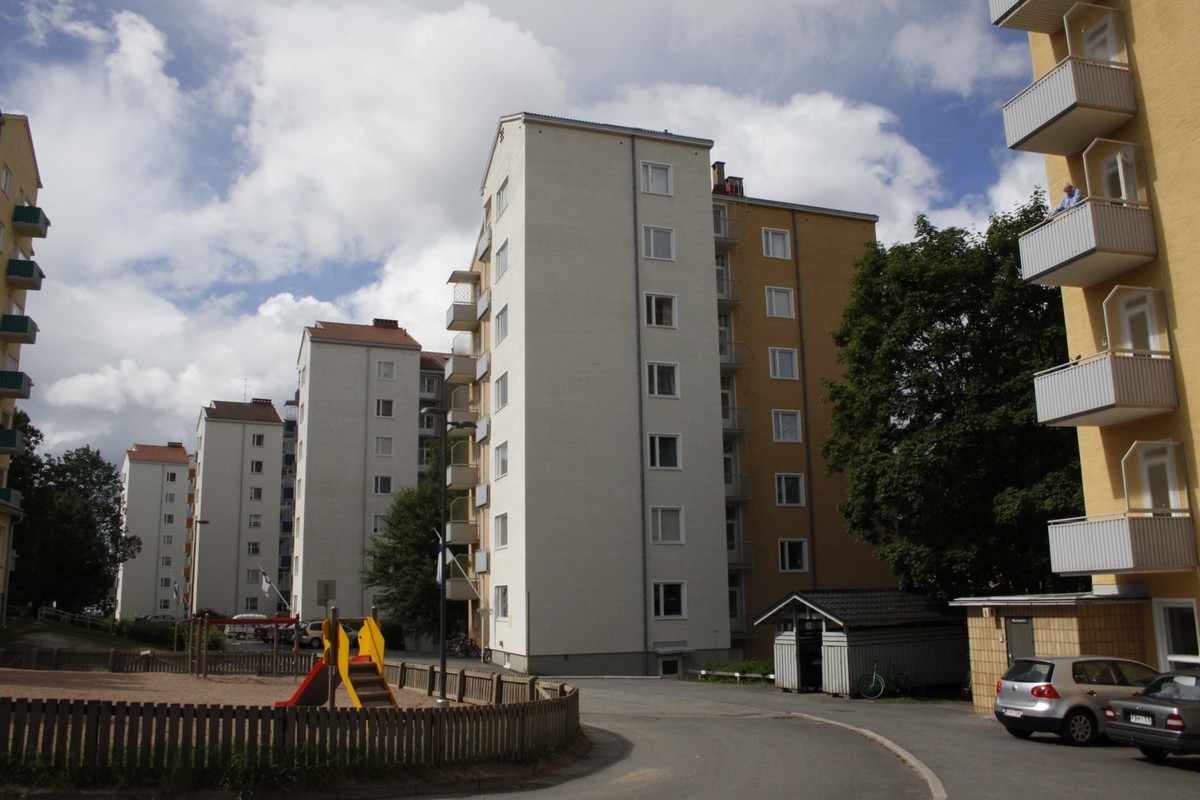18.3 Cities consist of different areas
Broadly speaking, the basic structures of large cities are similar everywhere the world. However, each city has its own unique features that have formed as a result of historical and geographical factors. Different functions, such as housing, industry and services, are concentrated in different areas of a city.
The heart of the city is the business center, which is often dominated by tall buildings and is easily accessible by various forms of transport from the surrounding areas. This means that the accessibility of the business center is good. This is why many services are located there. These services often include restaurants, banks, hotels, offices and stores. The rents in the business center are costly, but the centrality and accessibility of the location provide these services with a lot of customers. However, because of the high rents, housing in the business center is extremely expensive. This means that only a few people can afford to actually live there. In many cities, the business centers restrict the use of motor vehicles, making them safer and more pleasant for pedestrians.
When moving away from the center of the city, the price of land becomes cheaper. This results in lower buildings and larger land plots. The fringe areas of the city are dominated by neighborhoods of detached houses.
Large shopping centers are often built on the fringe areas of the city. These stores or hypermarkets are mostly accessible by car and offer a large variety of products at low prices.

A housing development in Turku.
During the 1960s, blocks of flats were built in areas that were located at some distance from the city centers in order to accommodate the growing urban population. These housing developments consist of high blocks of flats, schools, shops and other basic services. Today, Finnish cities expand further away from their centers. This has resulted in nearby cities forming connected urban areas with one another.
People belonging to the same ethnic or religious group usually concentrate in a certain area of a city. This process is called areal segregation. This process is behind the "Chinatowns" of cities such as New York and the favelas of cities like Rio de Janeiro. In Finland, areal segregation is sought to be prevented through regional planning.
Green areas, such as parks and urban forests, have an important role in increasing the pleasantness of the urban environment.

A park in Tampere.
The traffic areas of cities consist of street and railway networks, as well as parking lots, railway stations, bus stations, harbors and airports. In a sense, electricity and information networks as well as energy and water systems are also traffic areas. Complex networks of cables and tubes form the subterranean transport system of the city, transporting water, electricity, heating and information.
The structure of Helsinki.